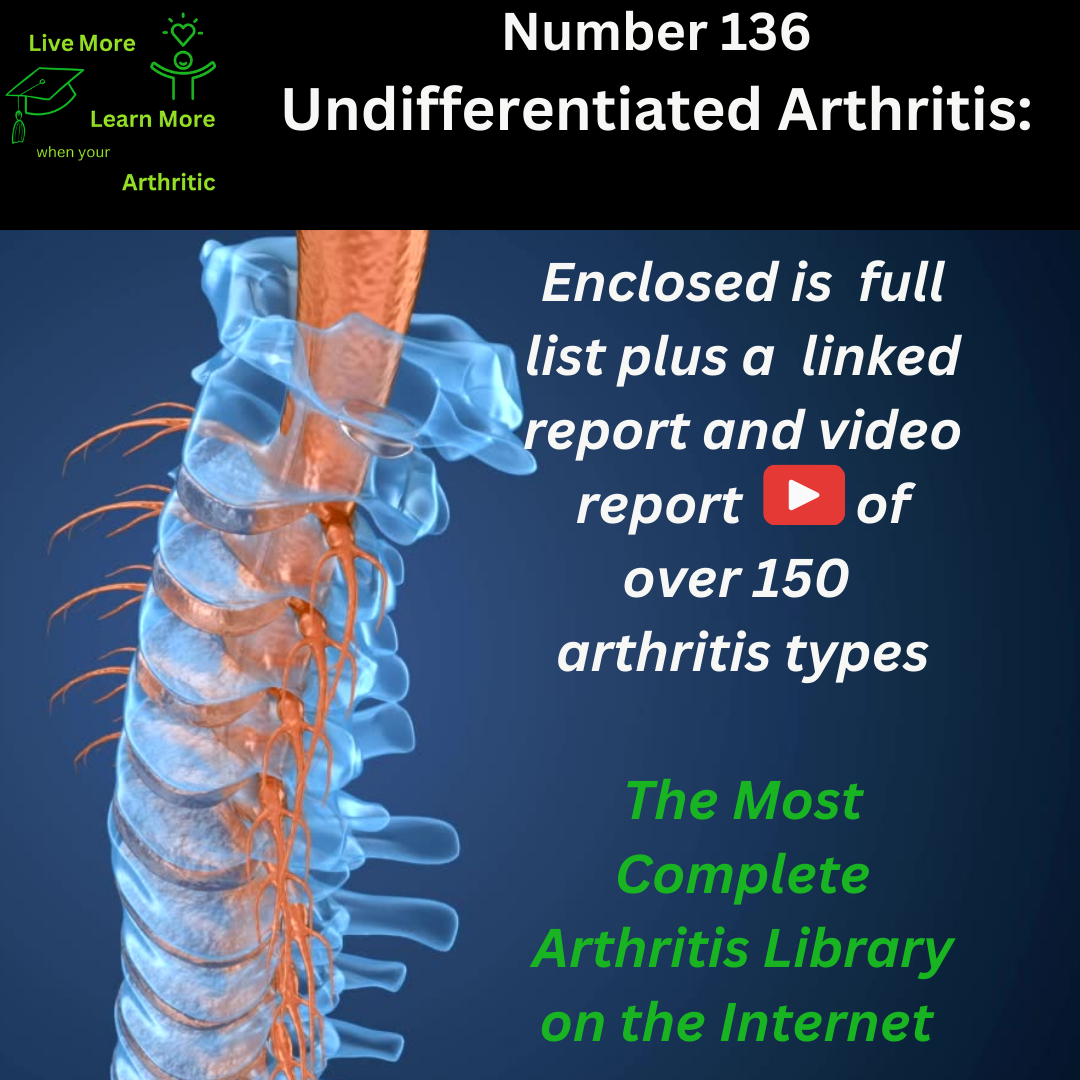
Undifferentiated Arthritis: Number 136 of around 150 types of Arthritis
Understanding Undifferentiated Arthritis
Undifferentiated Arthritis (UA) is a term used to describe inflammatory arthritis that does not meet the criteria for a specific type of arthritis like rheumatoid arthritis (RA), psoriatic arthritis, or ankylosing spondylitis. This condition presents with symptoms of joint inflammation, including pain, stiffness, swelling, and reduced mobility. UA is a diagnosis of exclusion, meaning other specific arthritis types must be ruled out.
The joints most commonly affected by UA include the hands, wrists, knees, feet, and shoulders. Symptoms can vary from mild to severe and may include morning stiffness lasting more than 30 minutes, fatigue, and general malaise. The limited range of motion in affected joints can impact daily activities and quality of life.
Potential for Remission
Remission is possible in Undifferentiated Arthritis, particularly with early diagnosis and aggressive treatment. Achieving remission involves controlling inflammation and preventing joint damage. Treatment strategies may include nonsteroidal anti-inflammatory drugs (NSAIDs), disease-modifying antirheumatic drugs (DMARDs), and biologic therapies.
Causes and Triggers
The exact cause of UA is unknown, but it is believed to be related to an autoimmune response, where the body’s immune system mistakenly attacks healthy joint tissue. Genetic factors, environmental triggers, and infections may contribute to the development of UA.
Risk Factors and Complications
Risk factors for UA include a family history of autoimmune diseases, certain genetic markers, and exposure to environmental triggers like smoking or infections. Complications of UA can include progressive joint damage, disability, and decreased quality of life if not properly managed.
Inflammation and Joint Tenderness
Inflammation and swelling are hallmark features of UA, leading to joint tenderness and pain. The inflammatory process can damage cartilage and surrounding structures, affecting joint function and mobility over time.
Impact on Quality of Life
Achieving a higher quality of life with UA involves a proactive approach to managing symptoms and preventing disease progression. This includes regular exercise to maintain joint flexibility and strength, adopting a healthy diet to reduce inflammation, and practicing stress-reducing techniques like yoga or meditation.
Possible Complications
Common complications of UA include joint deformities, osteoporosis due to reduced physical activity, and increased risk of cardiovascular disease. Regular monitoring by a rheumatologist and adherence to treatment recommendations are essential for minimizing complications and optimizing long-term outcomes.
Demographic Considerations
UA can affect individuals of any age, but onset typically occurs in adulthood, between the ages of 30 and 50. The condition affects both men and women, although some types of inflammatory arthritis may have a higher prevalence in certain genders.
 Interconnected Diseases and Conditions
Interconnected Diseases and Conditions
UA may overlap with other autoimmune diseases like Sjögren’s syndrome, systemic lupus erythematosus (SLE), or inflammatory bowel disease. It’s important to monitor for additional symptoms that may suggest the presence of an underlying connective tissue disorder.
In summary, Undifferentiated Arthritis presents unique challenges but can be effectively managed with early intervention, lifestyle modifications, and ongoing medical care. By taking a proactive approach to treatment and adopting healthy habits, individuals with UA can optimize their quality of life and minimize the impact of this chronic condition on daily activities and overall well-being.

